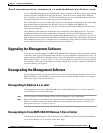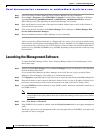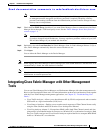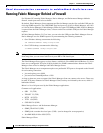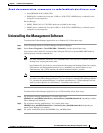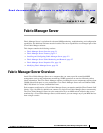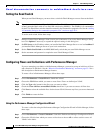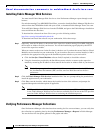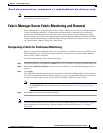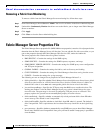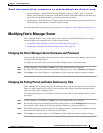
Send documentation comments to mdsfeedback-doc@cisco.com.
2-3
Cisco MDS 9000 Family Fabric Manager Configuration Guide
OL-6965-03, Cisco MDS SAN-OS Release 2.x
Chapter 2 Fabric Manager Server
Installing and Configuring Fabric Manager Server
Installing Fabric Manager Server
When you install Fabric Manager, the basic version of the Fabric Manager Server (unlicensed) is
installed with it. After you click the Fabric Manager icon, a dialog box opens and you can enter the IP
address of a computer running the Fabric Manager Server component. If you do not see the Fabric
Manager Server IP address text box, click Options to expand the list of configuration options. If the
server component is running on your local machine, leave localhost in that field. If you try to run Fabric
Manager without specifying a valid server, you are prompted to start the Fabric Manager Server locally.
On a Windows PC, you install the Fabric Manager Server as a service. This service can then be
administered using Services in the Administrative Too. The default setting for the Fabric Manager Server
service is that the server is automatically started when the Windows PC is rebooted. You can change this
behavior by modifying the properties in Services.
Unlicensed Versus Licensed Fabric Manager Server
When you install Fabric Manager, the basic unlicensed version of Fabric Manager Server is installed
with it. To get the licensed features, such as Performance Manager, remote client support, and
continuously monitored fabrics, you need to buy and install the Fabric Manager Server package.
However, trial versions of these licensed features are available. To enable the trial version of a feature,
you run the feature as you would if you had purchased the license. You see a dialog box explaining that
this is a demo version of the feature and that it is enabled for a limited time.
If you are evaluating one of these Fabric Manager Server features and want to stop the evaluation period
for that feature, you can do that using Device Manager. See the “Fabric Manager Server Licensing”
section on page 9-13.



